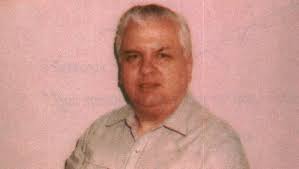Introduction to Michael Gacy and his criminal history
Michael Gacy is one of the most notorious criminals in American history. Born on March 17, 1942, he began his criminal activities early in life, including stealing, burglary, and conning people out of money. Gacy was eventually convicted of 33 murders of young men and boys between 1972 and 1978, and was ultimately given the death sentence. His modus operandi included luring young men into his home, drugging and raping them, and then strangling them to death with a rope. He would then bury the bodies in the crawl space of his home, often in quicklime, or dump them in the Des Plaines River.
Gacy’s trial was a highly-publicized affair, often called the “trial of the century” at the time. His defense team tried to argue that he was under the influence of an “alternate personality” which was responsible for the murders, but Gacy was ultimately found guilty and sentenced to death by lethal injection. Since his sentence, Gacy has entered the American public eye as one of the most notorious serial killers of all time. His crime spree and his clown-like public persona has earned him the nickname of “the Killer Clown”, and his gruesome trial and execution have been the subject of many books, films, and television shows – cementing Gacy’s status in criminal history as one of America’s most terrifying predators.
Overview of Gacy’s shocking murder spree
John Wayne Gacy, Jr., known as the “Killer Clown”, was a serial killer who terrorized the Chicago area from 1972 to 1978, murdering at least 33 young men and teenage boys. He had a list of victims who recognized him as a friendly clown, someone who could offer them work and financial gain. Little did they know that Gacy was actually luring them to their deaths. Gacy would often charm his victims, sometimes even hiring them to do odd jobs for him, before he took them to his home and strangled them. In addition to burying the bodies in the crawl space of his home, some of the victims were dumped in the Des Plaines River. Although he was arrested in December of 1978, it took six months for police to uncover the bodies in his home. Gacy was convicted of 33 counts of murder and executed by lethal injection in 1994. To this day, his spree of shocking murders remains one of the most prominent serial killer stories in American History.
Background information on Gacy, his family, and his early life
John Wayne Gacy was born on March 17, 1942 in Chicago, Illinois to John and Marion Gacy. He had two sisters and was raised in a Catholic household where his domineering father would not accept any wrongdoing. Gacy was a frail child who suffered from rheumatic fever as an adolescent and absent family support had a difficult time fitting in with peers. His father was an alcoholic and often abused his mother, leaving Gacy feeling helpless and eventually fostering a deep-seated rage towards women. His father also made John feel as if he was not good enough, so Gacy worked hard to please him, becoming a model student and employee. Despite his best efforts, John was unable to make his father proud, and when his father died in December of 1969, it had a massive effect on Gacy’s already fragile mental health. He ultimately left home in the early 1970s and moved to Des Plaines, Illinois where he started a construction business and immersed himself in activities involving children such as clowning and coaching. Despite his active role in the community, John Wayne Gacy was hiding a terrible secret: he was a violent serial killer of thirty-three boys and young men.
Details about Gacy’s notorious modus operandi
John Wayne Gacy is one of the most notorious serial killers in American history. His modus operandi was particularly disturbing, targeting young men and boys in the Chicago area over the course of several years. He would often approach his victims in public places with a persuasive and convincing demeanor, leading them to believe he had a legitimate opportunity to offer. He would then take them to his home, where he would brutally assault, rape and murder them. His victims ranged in age from 10 – 21 years old, and after some of these murders, he would dismember the bodies and bury them in a crawl space beneath his home. In other instances he disposed of the bodies in a nearby river or a neighbouring sewage drain. One of Gacy’s most disturbing habits was that after murdering many of his victims he would visit their grieving families and pose as a friend or colleague of his victims in order to discover details about them and the nature of their family life. Altogether, Gacy was responsible for 33 gruesome murders, leaving an indelible scar in the minds of all who followed the story.
Investigation into Gacy and the discovery of his victims
The investigation into the notorious serial killer John Wayne Gacy, was one of the most disturbing and grueling of our generation. Gacy received the nickname of the ‘Killer Clown’ due to his job as a children’s entertainer and clown, although the nickname would be very fitting for the horror that followed his arrest. After multiple reports of missing persons, the police, in December 1978, finally searched Gacy’s property in Des Plaines, Illinois. There they found enough evidence to link Gacy to multiple unsolved cases of missing persons, and he was arrested for his crimes. Over the next few months, police investigators slowly and meticulously searched Gacy’s property to uncover the exact extent of his horrific crimes.
Little by little, the investigators discovered the remains of 34 young boys and men, all buried in Gacy’s home or the surrounding area. Their grim discoveries subsequently shocked the whole nation, with their implications of premeditated murder. As soon as these findings had come to light, the history books were forever changed, with Gacy’s name going down in infamy as one of the world’s most terrifying serial killers. To this day, the discovery of Gacy’s victims still stands as one of the most grueling and disturbing investigations to ever have taken place.
Gacy’s trial and the sentencing of his sentence
The trial of John Wayne Gacy is one that will remain forever in infamy. Gacy was convicted of 33 counts of murder, all related to the disappearances and deaths of young boys in the area of Chicago in the late 1970s. After a lengthy trial, Gacy was sentenced to death. It was later revealed that after his arrest, Gacy had begun to draw himself and the characters in his murder fantasy, in an effort to prove his innocence. Unfortunately, the jury was not swayed by Gacy’s deranged attempt at self-defence and the jury sentenced him to death. Gacy was ultimately executed by lethal injection on May 10th, 1994 – an event that brought closure to the families of his victims, and to the community of Chicago as a whole. Gacy’s sentence and the trial that followed it served as a reminder to society of the devastating consequences of letting people get away with murder, and the importance of justice in our society.
Analysis of Gacy’s psychopathology and how it manifested itself
John Wayne Gacy was a notorious American serial killer who was convicted of murdering 33 men and boys. His reign of terror from 1972 to 1978 in Cook County, Illinois cast a long and dark shadow, and the subsequent analysis of his psychopathology has become a popular topic for study and discussion. Gacy’s psychopathology manifested itself in a number of ways, many of which were observed and documented by mental health professionals as his case developed. Gacy exhibited what is known as “antisocial personality disorder,” a condition that is characterized by a lack of empathy, morality, and remorse. This kind of personality disorder manifests itself in a wide range of behaviors including extreme risk-taking, substance abuse, poor impulse control, and aggression. Gacy also exhibited a level of narcissism and grandiosity, believing he was more important than others around him and had a special sense of entitlement. He was a master manipulator, able to con people around him into doing what he wanted, and was very adept at masking his true intentions. It’s also important to note that Gacy had a strong desire for control, and through his various killings, he showed an impulse to dominate and terrorize the people he chose as victims. This sadistic pattern of behavior, often combined with his other psychopathic tendencies, ultimately resulted in the tragic deaths of 33 innocent people.
Discussion of the impact that Gacy’s story has had on crime and psychology
The story of John Wayne Gacy Jr. has had a lasting impact on the fields of crime and psychology. By his own admission he was a monster, and the sheer number of his victims – estimated to be around 33 – is a testament to the evil of one man. Throughout Gacy’s trial and years of incarceration, psychiatrists and psychologists alike have attempted to understand not just how Gacy could have committed such atrocities, but why. What motivates a man to murder 33 people? What mental illnesses and psychological states can lead up to this level of evil? Perhaps most importantly, what can society do to identify the traits of a serial killer and prevent these tragedies from occurring? Questions such as these have spurred on researchers and academics for years, and Gacy’s story serves as a tangible example of darkness and cruelty in our society. The discussion surrounding Gacy’s legacy has pushed the conversation about crime and psychology into the mainstream, and has encouraged people to look into the underlying causes of criminal and violent behaviour. It’s a tragedy that such an evil deed had to take place in order for us to learn more about the psychology of crime, however it’s a lesson that has propelled the field of criminal psychology into the spotlight and given us invaluable insight into the criminal mind.
Introduction of other notorious serial killers who have been inspired by Gacy
The infamous John Wayne Gacy is known as one of America’s most notorious serial killers. His conviction shocked the nation, but we must not forget those other serial killers who have been similarly inspired by Gacy. Aside from Gacy, there are other infamous individuals who have been convicted or suspected of committing serial murder. For example, Edmund Kemper was nicknamed the “Coed Killer” because of his particular target, young college women and his family members. Another example of a notorious serial killer is Ted Bundy, a notorious murderer active in the 1970s. His face is instantly recognizable to many people and was known for his charming yet sadistic nature. There is also David Berkowitz—known as the Son of Sam, he terrorized New York City with a string of murders in the 1970s. His victims were usually young women and he often taunted the police with letters. Finally, there is Jeffrey Dahmer—perhaps the most notorious of these serial killers and known for his heinous atrocities against young men. He was convicted of 17 murders and is believed to have committed at least 19. These notorious individuals have all been inspired in some way by John Wayne Gacy and it’s chilling to think that his work is still being emulated today.
Conclusion summarizing Gacy’s story and its implications for society
John Wayne Gacy’s horrific crimes sent shock waves through the nation in the late 1970s and are still remembered today as a particularly gruesome reminder of the capacity for human evil. In the span of just 8 short years, Gacy caused unanswered pain and suffering to 33 men and boys and served as a warning of how an unchecked darkness can consume even someone who seemed normal at face value. The reminder of his story is still relevant today, as we should keep in mind people are not always who they appear to be and do not always act in ways expected. In addition, the justice system is still searching for answers as to why such evil can exist and how to prevent any future dark behavior from taking one’s life. Gacy’s story is a reminder of how quickly lives can be forever changed and how difficult it can be to understand why such a tragedy can occur. His legacy is to serve as a salient reminder that human will and determination, coupled with systems of accountability and care, can often serve as a bulwark against such senseless tragedies.
Read our more informative articles on Scoopearth.co.uk








